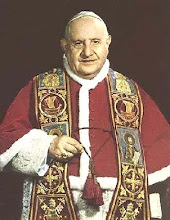In the meantime, although I'm a non-homeschooler, I spent the summer, as I did last year, devising and teaching a home-study curriculum to my rising second-grader. While last year our work comprised a general introduction to aesthetics and their place in the human person and community using picture books, this summer's focus was on Henry David Thoreau. I was led to this topic by way of a new and wonderful children's book about how Charles Ives composed his Orchestral Set No. 2. On the face of it, this may seem a dull subject for a picture book, but it's anything but. The third movement of Ives's piece, called "From Hanover Square North, at the End of a Tragic Day, the Voices of the People Again Arose," commemorates the day the Lusitania was sunk in 1915; the crowd waiting on the subway platform at the end of the workday began to spontaneously sing "In the Sweet Bye and Bye."
Because Charles Ives also wrote a musical portrait of Thoreau in the fourth movement of his Piano Sonata no. 2, "Concord," I went, in figuring out what our summer course would be, from Ives onward to Thoreau. Ives wrote that the Concord Sonata was meant to give an "impression of the spirit of transcendentalism that is associated in the minds of many with Concord, Massachusetts of over a half century ago. This is undertaken in impressionistic pictures of Emerson and Thoreau, a sketch of the Alcotts, and a scherzo supposed to reflect . . . Hawthorne," and I thought Thoreau would hold more appeal to a seven-year-old than his erstwhile Concord colleagues.
I also thought that my autism-spectrum little boy would understand in a particular way Thoreau's single-minded obsession with the natural world, an obsession that led him to eschew society for two years -- a society that regarded him as warily as he it -- which is altogether a sort-of spectrum-ish situation in itself, when you think about it.
I was delighted to find many children's books about Thoreau, some of them excellent. I didn't warm up to the D.B Johnson series at first, because it seemed a little precious to depict Henry David Thoreau as a bear; but then I opened one of the books and saw how wonderful they were. The illustrations suggest cubism, and some of the books veer into the dreamlike and transcendent, like Henry Climbs a Mountain, which begins with the real-life event of Thoreau's arrest for tax evasion -- enacted in protest of the legal institution of slavery -- and the resulting night he spent in jail. In the book, the bear-Henry enters into a synaesthetic vision in which he meets an escaped slave and helps him to freedom.
So, over the summer, we read about a dozen children's books about Thoreau; my son wrote about them in his journal; and we started going into nature ourselves -- a state park about ten miles away -- and observing it closely. This has proven to be an unexpected boon for my son: in nature, his near-constant anxiety seems to completely lift away, and he is quiet and observant, seeing things the rest of us miss. He brings a journal with him, and he writes poetry containing quite lovely images, and, like Thoreau, makes little sketches of the flora and fauna he encounters.
School is in session now, and we've started another home-study unit. Somehow this one branched out from my son's love of the music of Antonín Dvořák, which, frankly, has a lot of things in it for a child to love. My son first encountered Dvořák's music in a violin transcription of the famous English horn theme ("Going home") from the second movement of his Symphony no. 9 (From the New World), which Dvořák composed in America when he was director of the short-lived National Conservatory in New York.
My son had also become familiar with Dvořák's American String Quartet last year, after we read a lovely picture book about its composition called Two Scarlet Songbirds (in a sort of "Anecdote of the Jar" scenario, Dvořák attempted to imitate the song of the scarlet tanager, which he first heard in the Czech community of Spillville, Iowa, in the quartet's third movement).
So I am envisioning an interdisciplinary home-study taking place over this fall and winter, which, like the Thoreau unit, begins with the great music of a great composer. There are many directions one can take starting out from Dvořák: folk music and culture, the encounter of the old world with the new, African-American and Native American musics, of which Dvořák was a great admirer (he told a reporter from the New York Herald that "In the Negro melodies of America I discover all that is needed for a great and noble school of music. . . . .There is nothing in the whole range of composition that cannot be supplied with themes from this source"), and from an age-appropriate study of these musics on toward a study of the cultures from which they arose.
I love doing this. Introducing my children to the beauty of the world is a great concern of mine. Sometimes I think I'd like to homeschool just in order to devise and implement such aesthetically-derived curricula. But my abilities to do all of this also raise questions for me. An aesthetic education is a given for me, a sine qua non, but what about all the other children -- most American children, in fact -- whose parents are not in a position to enrich their educations like this? It may be an accident of birth that my children have access to these things, but I feel strongly that I have a responsibility also to children who have not suffered such an accident. Public education has traditionally been supposed to remediate these accidents, and theoretically to supply all children with the same access to resources and means in order to give them all the same opportunities. But, as we know, neither resources, means, nor opportunities are evenly distributed in our society, which makes me feel even more strongly that it's incumbent on me to use my own in the service of those who lack them.
I understand that many in my cohort don't feel with me. While I greatly admire Sally Thomas as a writer, teacher, and mother, I disagree with her here, at least where it comes to my own situation. I cannot presume to know what's best for anyone's children at any given time, and that includes my own more often than not, but my feelings about sending my children out into the world diverge from Sally's. Perhaps it's naive, but I believe that the world needs their light, and that we need to bring that light into the dark places. Every day before school I tell my son to look for opportunities to do kindnesses to people in his midst, because each kindness goes a little way towards the healing of the world, a world which, as we know, Jesus Christ is even now restoring unto himself. "Do something to make the world a better place," I tell him, an exhortation that I heard more times than I can remember at my own mother's knee. There are, of course, many ways of doing this, as many ways as there are people. For myself, while I wish to educate my children in beauty, I also would like to carry that beauty to the many children in my older son's school who have no access to it, which is why, to make a long story short, I'm working on the committee that I mentioned above. If it's unjust that my children should love the music of Ives and Dvořák and should take long walks in the woods while some children in my son's class don't have beds to sleep in or meals between school lunch on Friday and school breakfast on Monday, I believe I should do something about it, and that the best way that I can do it is through music-educational outreach, because spirits need to be fed as surely as bodies.










